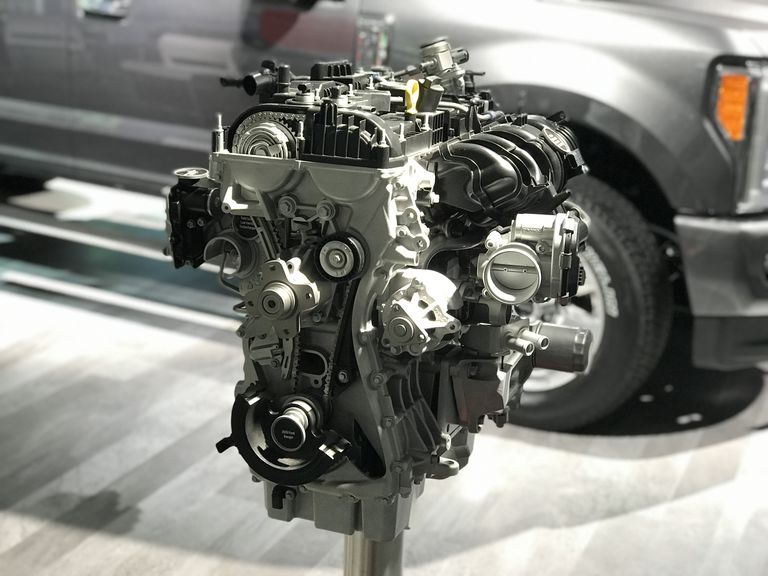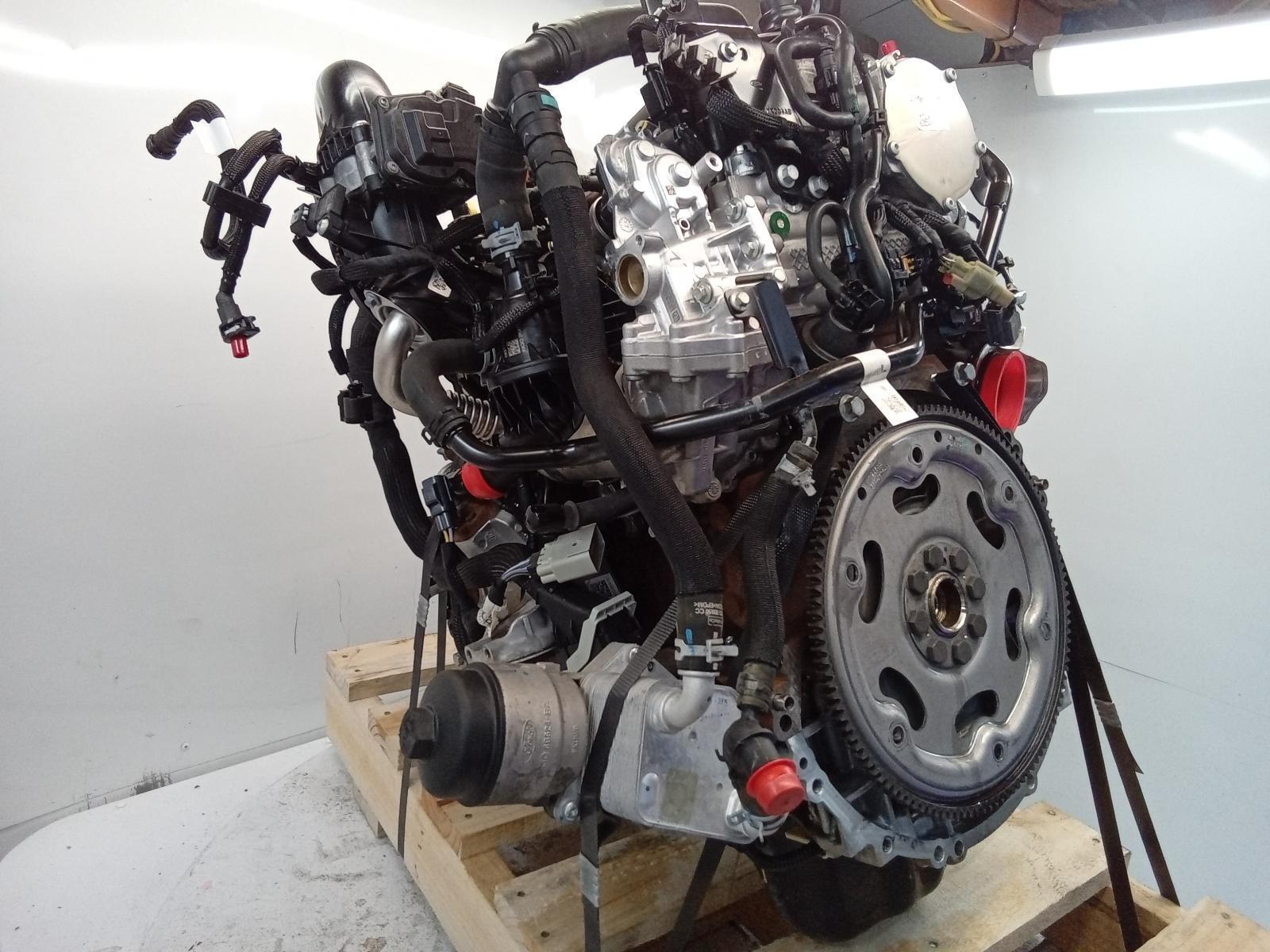Explore the Key Features of the 2.2 Ford Ranger Engine and Its Fuel Efficiency
Explore the Key Features of the 2.2 Ford Ranger Engine and Its Fuel Efficiency
Blog Article
Understanding the Basics of Vehicle Engines: Functions, kinds, and attributes

Review of Car Engines
A cars and truck engine functions as the heart of an automobile, transforming fuel into power to push it onward. This elaborate system consists of various parts that operate in unison to guarantee optimal efficiency and effectiveness. The essential procedure of an auto engine involves the interior burning procedure, wherein gas and air are blended, sparked, and eliminated to create power.
The engine's layout can dramatically affect its efficiency, fuel efficiency, and exhausts. Key parts consist of the cyndrical tube block, pistons, crankshaft, and camshaft, each playing a critical function in the engine's general function. The cylinder block houses the cyndrical tubes where combustion happens, while the pistons transform the eruptive power from burning right into straight movement. This movement is after that transformed right into rotational power by the crankshaft, allowing the car's wheels to turn.
In addition to these components, engines commonly utilize numerous systems such as gas shot, ignition, and cooling down systems to boost performance and long life. Understanding the fundamental mechanics of cars and truck engines is necessary for diagnosing problems and carrying out maintenance, inevitably adding to the lorry's dependability and performance gradually.

Types of Automobile Engines
Car engines can be classified into several types based on their style, gas kind, and functional concepts. 2.2 ford ranger engine. The most usual groups consist of interior combustion engines (ICE), electrical engines, and crossbreed engines
Inner burning engines, which can be further split into gas and diesel engines, run by igniting a fuel-air combination to generate power. Gasoline engines are commonly lighter and smoother, while diesel engines are more fuel-efficient and deal higher torque.
Electric engines make use of electrical energy saved in batteries to power an electric motor, supplying immediate torque and zero exhausts during operation. As technology advancements, electrical vehicles (EVs) are progressively coming to be preferred for their environmental advantages and reduced running prices.
Hybrid engines combine aspects of both internal burning and electric engines, enabling versatile source of power and enhanced fuel efficiency. They can operate in numerous settings, utilizing either the gasoline engine, the electrical motor, or both simultaneously.
Each sort of engine has unique advantages and downsides, affecting their application in different vehicle types and market sections, from small automobiles to heavy-duty trucks. Comprehending these kinds is important for making notified decisions pertaining to automobile option and performance assumptions.
Engine Features Discussed
Recognizing engine functions is important for grasping exactly how automobiles run effectively. At the core of any type of inner combustion engine exists the essential procedure of converting fuel right into mechanical power.
The ignition occurs following, igniting the mixture and developing a fast expansion of gases. This pressure drives the piston down during the power stroke, which ultimately converts right into the rotational motion of the crankshaft. The exhaust stroke after that removes the spent gases from the chamber, making way for link a new cycle to commence.
Along with these key features, engines additionally incorporate systems that manage cooling and lubrication, making sure ideal operational temperatures and decreasing friction in between relocating components. This complex interaction of functions allows the engine to generate the power needed for vehicle propulsion while preserving efficiency and integrity. Understanding these functions gives useful insight right into the complexities of automotive engineering and boosts the capability to identify and resolve engine-related issues effectively.
Key Engine Attributes
Engine style includes a number of essential functions that significantly influence performance, performance, and sturdiness. One of the most critical reference facets is the engine setup, that includes inline, V-type, and level styles. Each setup impacts the engine's power, equilibrium, and dimension outcome, therefore affecting total automobile dynamics.
An additional important function is the engine displacement, describing the total quantity of all cyndrical tubes. Bigger displacements typically produce more power however may jeopardize fuel effectiveness. Engine products likewise play a critical duty; high-strength and lightweight materials, such as light weight aluminum and magnesium alloys, boost performance without adding too much weight.
The type of gas injection system used-- such as straight or multi-port injection-- influences burning effectiveness and emissions. Turbocharging and turbo charging are functions that enhance engine performance forcibly added air into the combustion chamber, increasing power output without dramatically raising engine dimension.
Last but not least, the existence of advanced engine monitoring systems optimizes fuel-air mix and ignition timing, adding to smoother operation and better gas economy. Jointly, these functions specify an engine's capabilities, establishing the structure for its efficiency and long life in a competitive auto landscape.
Maintenance Tips for Engines
Correct engine maintenance is vital for ensuring ideal my explanation performance and long life, as ignoring routine care can cause significant issues down the line. To preserve your engine efficiently, start with regular oil adjustments, generally every 3,000 to 7,500 miles, relying on the kind of oil utilized. Fresh oil lubes engine parts, lowering friction and wear.
Additionally, keeping an eye on coolant levels is crucial to stop getting too hot. Make certain that the coolant is topped up and remains in good condition to keep effective temperature level regulation. On a regular basis examine and change air and fuel filters, as clogged filters can impede air flow and fuel delivery, jeopardizing engine effectiveness.
Additionally, take note of spark plugs and ignition systems. Worn or faulty ignition system can lead to misfiring and minimized performance. Checking the battery terminals and connections for deterioration is likewise vital, as a weak battery can affect engine starting.
Conclusion
In summary, an extensive understanding of car engines includes different types, features, and crucial attributes that significantly affect lorry efficiency. Interior burning engines, in addition to hybrid and electrical options, demonstrate varied devices for power conversion. 2.2 ford ranger engine. Acknowledging the essential functions, such as intake and exhaust cycles, together with essential engine functions like configuration and fuel shot systems, gears up auto owners with the understanding essential for efficient upkeep and operation, inevitably improving car durability and efficiency
A cars and truck engine offers as the heart of a car, transforming gas right into mechanical energy to move it onward. The essential procedure of an automobile engine entails the internal combustion procedure, wherein gas and air are combined, stired up, and expelled to produce power.
Routinely change and examine air and gas filters, as clogged up filters can prevent air movement and gas delivery, endangering engine effectiveness. - 2.2 ford ranger engine
In summary, a detailed understanding of car engines encompasses numerous kinds, functions, and vital functions that dramatically affect vehicle performance. Acknowledging the important features, such as intake and exhaust cycles, together with vital engine functions like configuration and fuel injection systems, gears up cars and truck proprietors with the expertise needed for effective upkeep and operation, eventually boosting lorry longevity and efficiency.
Report this page